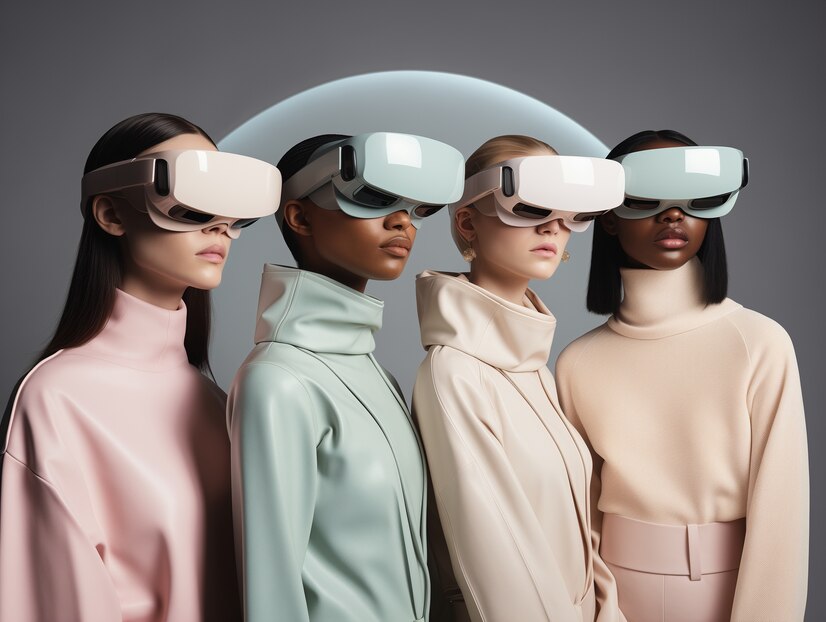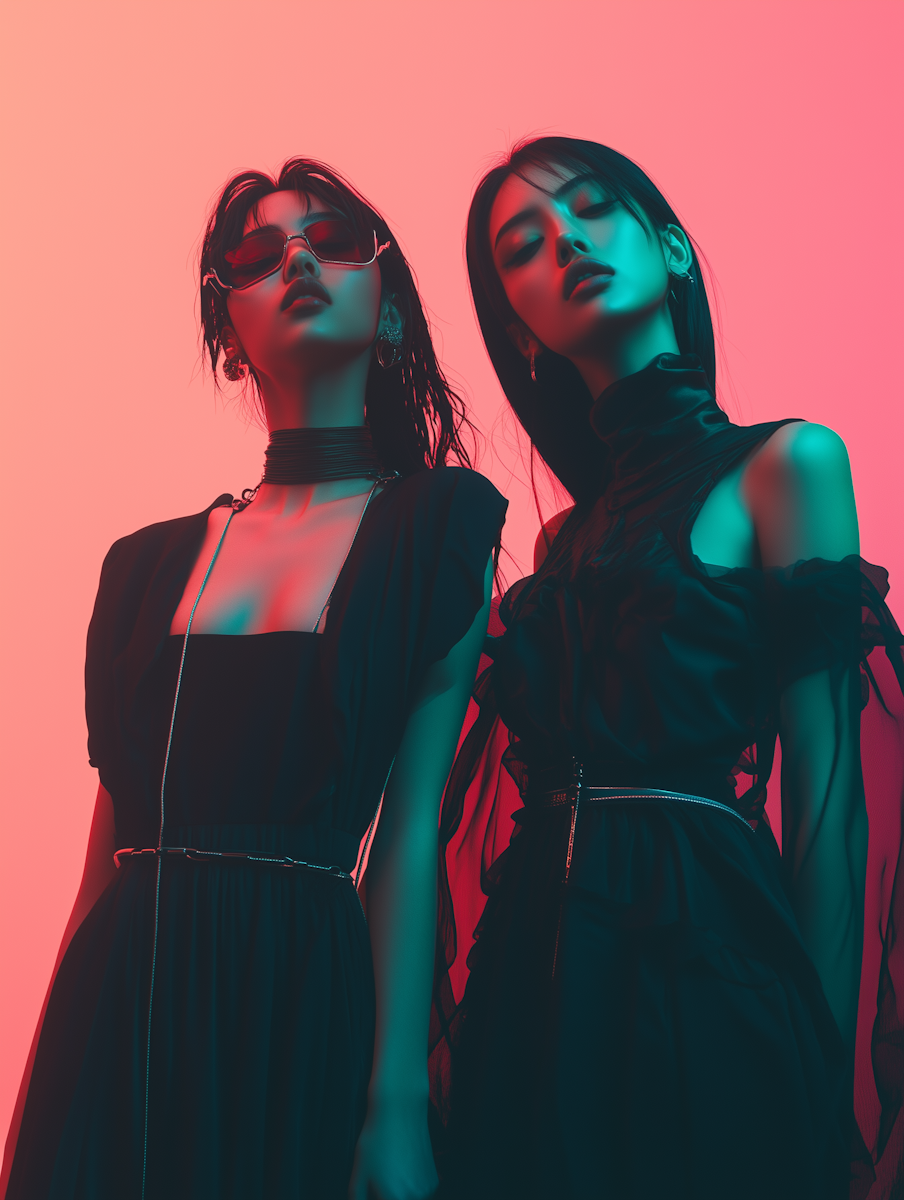Table of contents
- The Evolution of Fashion and Technology
- Wearable Tech: Where Function Meets Fashion
- Digital Fashion: Dressing in the Virtual World
- The Role of AI and Machine Learning in Fashion
- Virtual Reality (VR) and Augmented Reality (AR)
- Ethical and Environmental Considerations
- What the Future Holds
- Frequently Asked Questions (FAQ)
- Conclusion
The worlds of fashion and technology are rapidly converging, creating a fascinating new frontier where style meets innovation. From smartwatches to virtual fashion shows, the integration of technology into fashion is revolutionizing not just how we dress, but how we experience fashion itself.
This blog explores how fashion and technology are shaping the future through wearable tech, digital fashion, virtual reality (VR), artificial intelligence (AI), and more. Whether you’re a tech enthusiast or a style lover, this deep dive will show how innovation is transforming the industry at every level.
The Evolution of Fashion and Technology
Traditionally, fashion has been driven by aesthetics, trends, and cultural movements. But in the 21st century, technology has become a major force in design, production, marketing, and customer experience. The evolution from manual techniques to automated processes, 3D design, and even blockchain-based fashion shows just how deeply technology is influencing this creative industry.
Wearable Tech: Where Function Meets Fashion
One of the most visible intersections of fashion and technology is in wearable technology. These are smart devices worn on the body that combine functionality with style.
Popular Examples of Wearable Tech:
- Smartwatches (e.g., Apple Watch, Samsung Galaxy Watch)
- Fitness Trackers (e.g., Fitbit, Garmin)
- Smart Glasses (e.g., Ray-Ban Meta, Snap Spectacles)
- Smart Clothing that tracks biometrics or changes color
Wearable tech is not just practical—it’s becoming fashionable. Designers are partnering with tech companies to make sure these devices blend seamlessly into everyday style. Think high-end jewelry with tracking functions or jackets with built-in heating systems.
Digital Fashion: Dressing in the Virtual World
As the digital world expands, so does the concept of digital fashion. This refers to clothing that exists only in the digital space—used in video games, augmented reality (AR), social media, and even the metaverse.
Why Digital Fashion Is Gaining Momentum:
- Zero waste: No physical materials are used, making it sustainable.
- Creative freedom: Designers can experiment without limitations of fabric or gravity.
- Virtual identity: Gen Z and millennials are embracing digital fashion for avatars and social media posts.
Big brands like Gucci and Balenciaga are already exploring digital-only collections and selling virtual outfits for online platforms. Fashion NFTs (non-fungible tokens) are also gaining traction, allowing digital ownership of unique pieces.
The Role of AI and Machine Learning in Fashion
Artificial intelligence is quietly but powerfully reshaping fashion. AI tools analyze customer behavior, predict trends, and even help with designing clothes.
Applications of AI in Fashion:
- Personalized shopping experiences
- Automated customer service (chatbots)
- Inventory management and forecasting
- AI-generated fashion designs
Brands like Stitch Fix use algorithms to suggest outfits, while retailers use AI to optimize pricing, reduce returns, and offer virtual fitting rooms.
Virtual Reality (VR) and Augmented Reality (AR)
The use of VR and AR is making online shopping more immersive and interactive.
How VR and AR Are Used in Fashion:
- Virtual try-ons using your phone camera
- 360° virtual fashion shows
- Virtual storefronts in the metaverse
This technology is reducing the need for physical retail space while increasing engagement and customer satisfaction. It’s also giving fashion shows a global reach, allowing people to attend from anywhere in the world.
Ethical and Environmental Considerations
With all these technological advancements, there are important ethical and environmental discussions happening in parallel. Digital fashion reduces material waste, but what about the energy consumption of NFTs and virtual environments?
Similarly, wearable tech collects sensitive health and location data, raising privacy concerns. As fashion and technology merge, brands must navigate these complex issues responsibly.
What the Future Holds
The future of fashion and technology is dynamic, immersive, and deeply personal. As these two industries continue to intertwine, we can expect:
- More sustainable digital design practices
- AI-generated clothing lines
- Biometric-based personalization
- Blockchain for transparency in supply chains
- An expanded metaverse fashion economy
It’s no longer just about what we wear—it’s about how we experience fashion.
Frequently Asked Questions (FAQ)

Wearable tech refers to clothing or accessories that include advanced technologies for functionality, such as smartwatches, fitness trackers, or heated jackets.
Digital fashion exists only in virtual environments and is used for avatars, social media, and the metaverse. It’s sustainable and allows limitless creativity.
AI helps with trend prediction, personalized shopping, customer service, inventory management, and even the design process itself.
Fashion NFTs are still in their early stages. While they offer exclusivity and digital ownership, their value depends on rarity, brand reputation, and future utility.
Yes, digital fashion eliminates physical waste, but its sustainability depends on the energy sources used for servers and blockchain operations.
Conclusion
The fusion of fashion and technology is one of the most exciting developments of our time. It’s redefining how we shop, express ourselves, and interact with the world. From wearable gadgets to virtual wardrobes, the possibilities are endless. Whether you’re a designer, consumer, or tech geek, embracing this transformation means stepping into the future of style.





